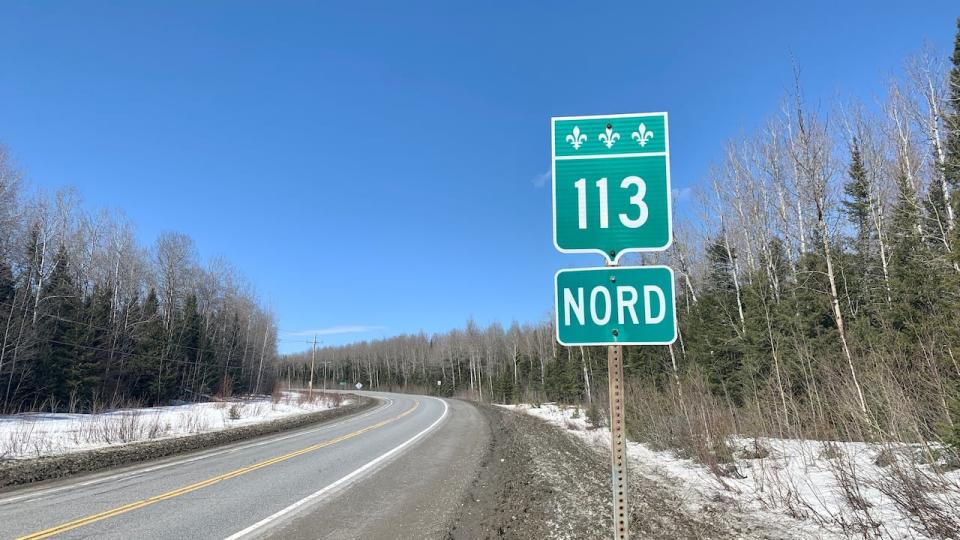Cellular service expanding along highways in northern Quebec

A $57 million project announced Tuesday will see long-awaited cellular service rolled out across many northern Quebec highways and Cree community access roads.
The project is being jointly funded by provincial and federal governments and will be carried out in two phases with the construction of close to 50 new cellular towers in the James Bay region and Eeyou Istchee, the traditional name for the Cree territory in Quebec.
"Having cell service will drastically enhance the safety of all people [in] the North," said Henry Gull, president of James Bay Eeyou Corporation and Eeyou Mobility.
Eeyou Mobility is one of three main partners in the project, along with Eeyou Communication Network and SSi Canada.
"This is a long overdue service that has been required in the Cree nation."
In the first phase, 30 cellular towers will be built along the entire length of the Billy Diamond Highway, the main highway connecting Cree communities with the South, as well as along highways 113,167, 109 and a portion of the route du Nord, among others.
In the second phase, some 16 cellular towers will be constructed along the access roads to Cree communities, with an aim to provide service for Cree traplines, hunting and fishing zones in the area, as well as industrial and mining sites.

A group of officials at a press conference Tuesday in Lebel-sur-Quévillon, including: Alfred Loon, third from left, president of Eeyou Communications Network; Jean Boulet, fourth from left, Quebec minister of labour and minister responsible for northern Quebec; Norman A. Wapachee, third from, deputy Cree Grand Chief; and Denis Lamothe, second from right, deputy for Ungava riding. (Government of Quebec)
In 2021, the lack of cellular service in northern Quebec was heavily criticised by local officials after Caleb Brien, a Waswanipi resident, was hit by a car and killed in an area without cell service along highway113.
And in the summer of 2023, forest fires in northern Quebec saw many people fleeing the territory by car and stuck in traffic for hours along highways without cellular service.
"I believe there's a lot of people that have difficulties [travelling] in the North …there's not many service stations," said Gull, adding they heard many stories of the safety challenges travelling in the north and those concerns were heard by federal and provincial officials.
"They took this very seriously," said Gull, adding the service improvement will allow travellers using Eeyou Mobility and their roaming partner Rogers access to Google maps, the internet and cellular services while travelling.
Current Eeyou Mobility clients will get access to the expanded network as part of their current plans.
The expanded and improved network will also benefit businesses and increase tourism potential in the territory, Gull said.
The federal government is contributing $28 million to the project, which was announced at a press conference in Lebel-sur-Quévillon Tuesday afternoon.

In 2021, the lack of cellular service in northern Quebec was heavily criticized by local officials after Caleb Brien, a Waswanipi resident, was hit by a car and killed in an area without cell service along highway113. (Radio-Canada / Jean-Michel Cotnoir)
"This funding will help bridge the digital divide affecting the region's communities and contribute to greater safety for residents and motorists travelling these roads," said Sean Fraser, minister of Housing, Infrastructure and Communities for the federal government, in a press release.
The other $28 million is coming from Quebec. Jean Boulet, minister of labour and minister responsible for northern Quebec, was on hand for the announcement in Lebel-sur-Quévillon.
"The deployment of telecommunications services in the Nord-du-Québec presents colossal challenges, given the vastness and isolation of the region," said Boulet in a release.
"This investment … will enable residents of remote regions to benefit from the same modern services as if they lived in major centres."
Mandy Gull-Masty is the Grand Chief of the Cree.
"This investment will greatly improve the living conditions of our population," she said. "The Eeyou Mobility project will make a significant contribution to the region's connectivity, while making safety a priority and ensuring that we can always be reached as we move across our vast territory."


